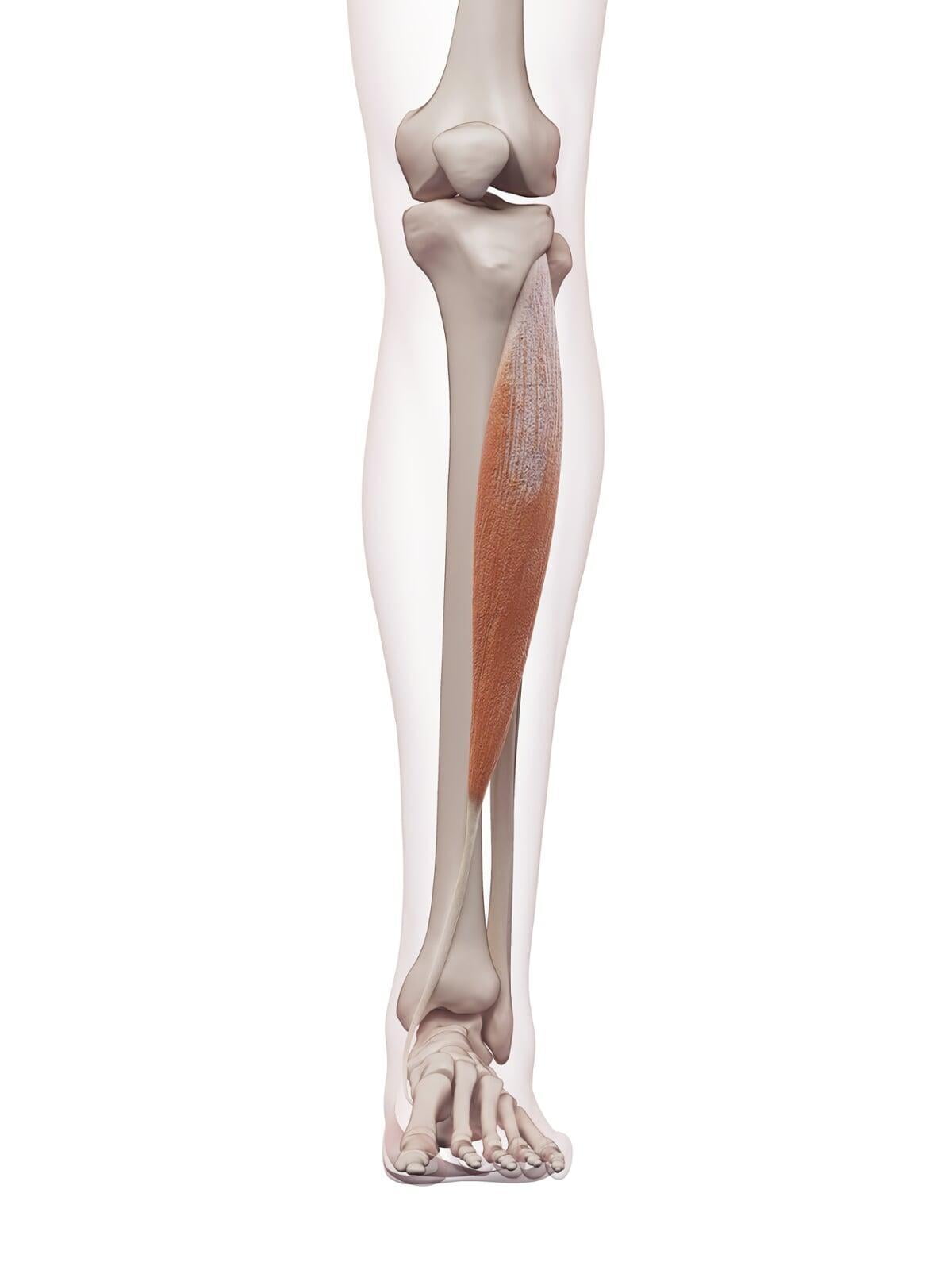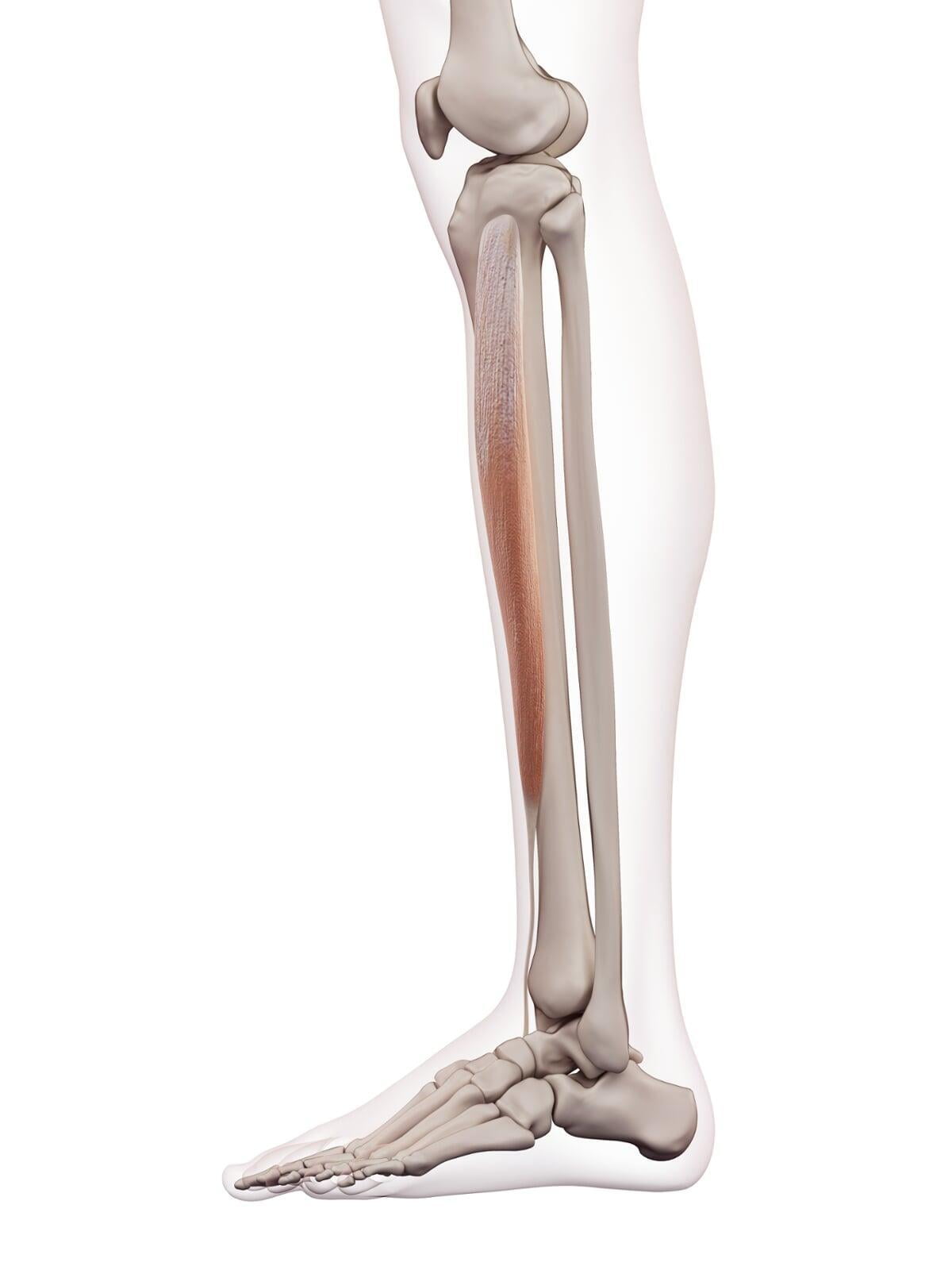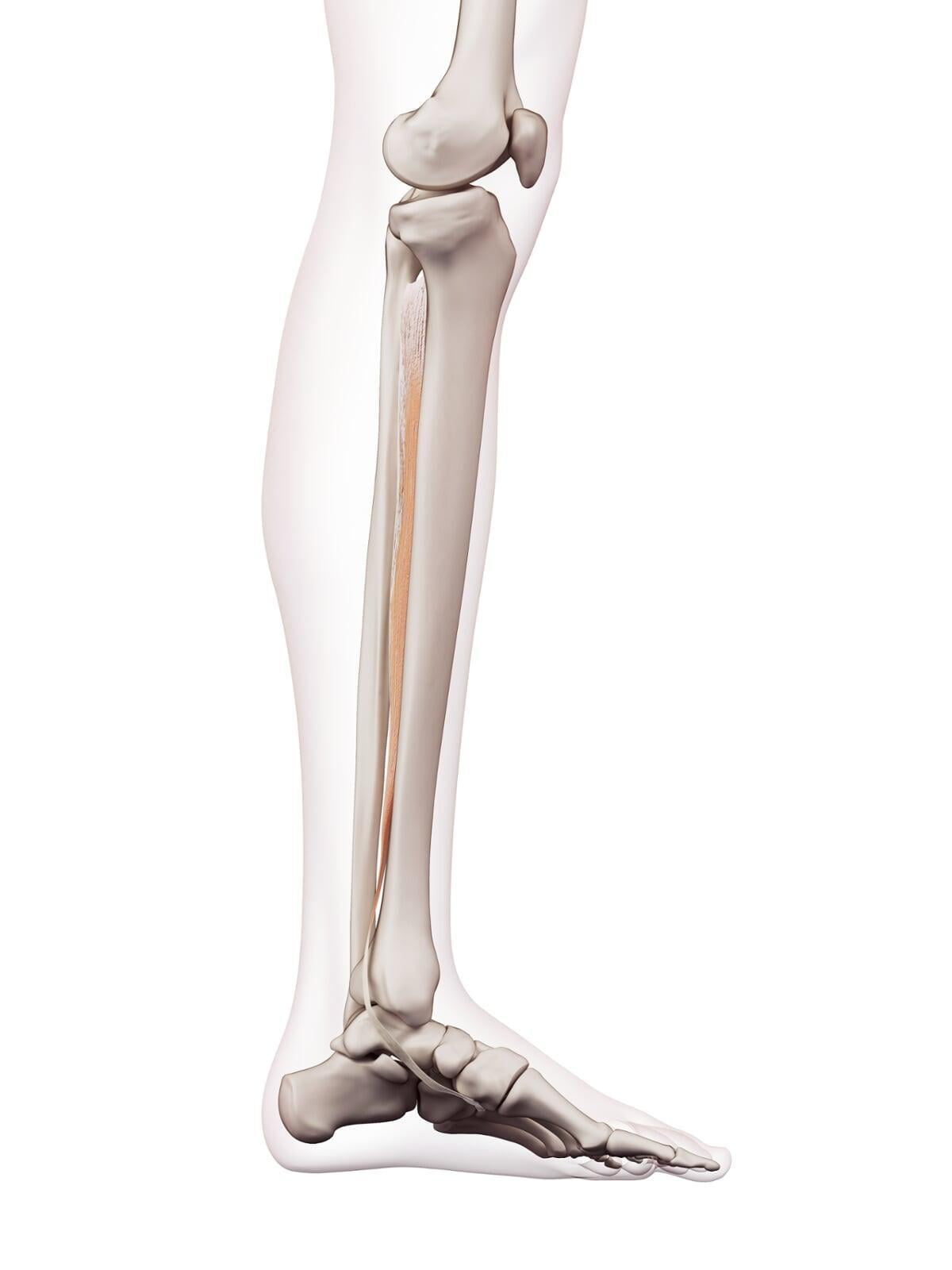Shin splints, or its fancy name of medial tibial pain syndrome, is a pretty common issue for runners. It is often related to ‘too much too soon’ and an overloading of the muscles. However, this overloading may also come about due to a biomechanics such as joint mobility issue or the alignment of bones in the foot.
Repetitive stress of the tibialis anterior and tibialis posterior muscles, from running and high impact, can cause inflammation and irritation of the muscles and the tendons attaching them to the bone. This injury may be caused by changes to duration, frequency or intensity of running; ‘too much too soon’. Pushing through the pain often isn’t the best idea and may lead on to a more severe injury.

Tibialis anterior muscle

Tibialis anterior muscle (lateral view)

Tibialis posterior muscle
EARLY WARNING SIGNS
~ Dull, aching pain and maybe tenderness over the inside of the tibia (shin) bone. This is often over the lower third of the shin, however if it’s confined to a very small area then it may not be shin splints but rather a tibial stress fracture.
~ Pain at the start and again at the end of a run. As the injury worsens, the pain last longer and longer on each run.
~ Pain may eventually be present even when walking.
~ Pain on lifting toes against resistance and when pointing toe towards the ground (ankle plantarflexion).
TREATMENT
Prevent risk of further injury – not what you’ll want to hear but yes I’m advising you rest from running. But this does not give you free rein to sit feet up for weeks on end as now is the time to work on strengthening the muscles of the lower leg.
Reduce inflammation and strengthen the muscles – ice pack and compression socks are your pals at this stage. But remember, don’t ice directly on to the skin and allow breaks from the cold after fifteen minutes or so.
Lengthen the muscle tissue – tight calfs are commonly associated with a shin splint injury and therefore it’s often starting point for sports massage. Massage can help to release any built up tension and encourage efficient action of the muscles by separating and breaking down adhesions. Increased blood flow to the muscles tissues creates an analgesic effect which will hopefully allow you to be more comfortable, although it may not seem it straightaway as the massage work may be a wee bit nippy. I promise it’s doing you good!
RETURNING TO RUNNING
When can I get back to running I hear you ask? Well, it might take a wee while of cross training or gentle incline treadmill work (if you’re lucky enough to have access to one) to start. After that, it’s vitally important that you pace your return to running. Please don’t plan to go straight back intervals or a Parkrun PB. Slow and steady wins the rehab race! Stop after short periods to stretch, particularly the calfs, to keep the soft tissues lengthened and tension free.
Try 5 x 3 minutes with stretch stops between each set. Then slowly increase these intervals to 5 x 4 minutes with stretch breaks, then 5 x 5 minutes and so on. Continue with strengthening work too but make sure this exercises are NOT done before going for a run. Strength work increases muscle fatigue and your muscles need all the goodness and energy they can get just now to get back to running. Of course make sure you’ve done a decent warm-up up before running as usual but just don’t do your specific strength work until later on.
All in all, shin splints aren’t the end of the world, as long as you’re sensible from the start and pay attention to your body.
